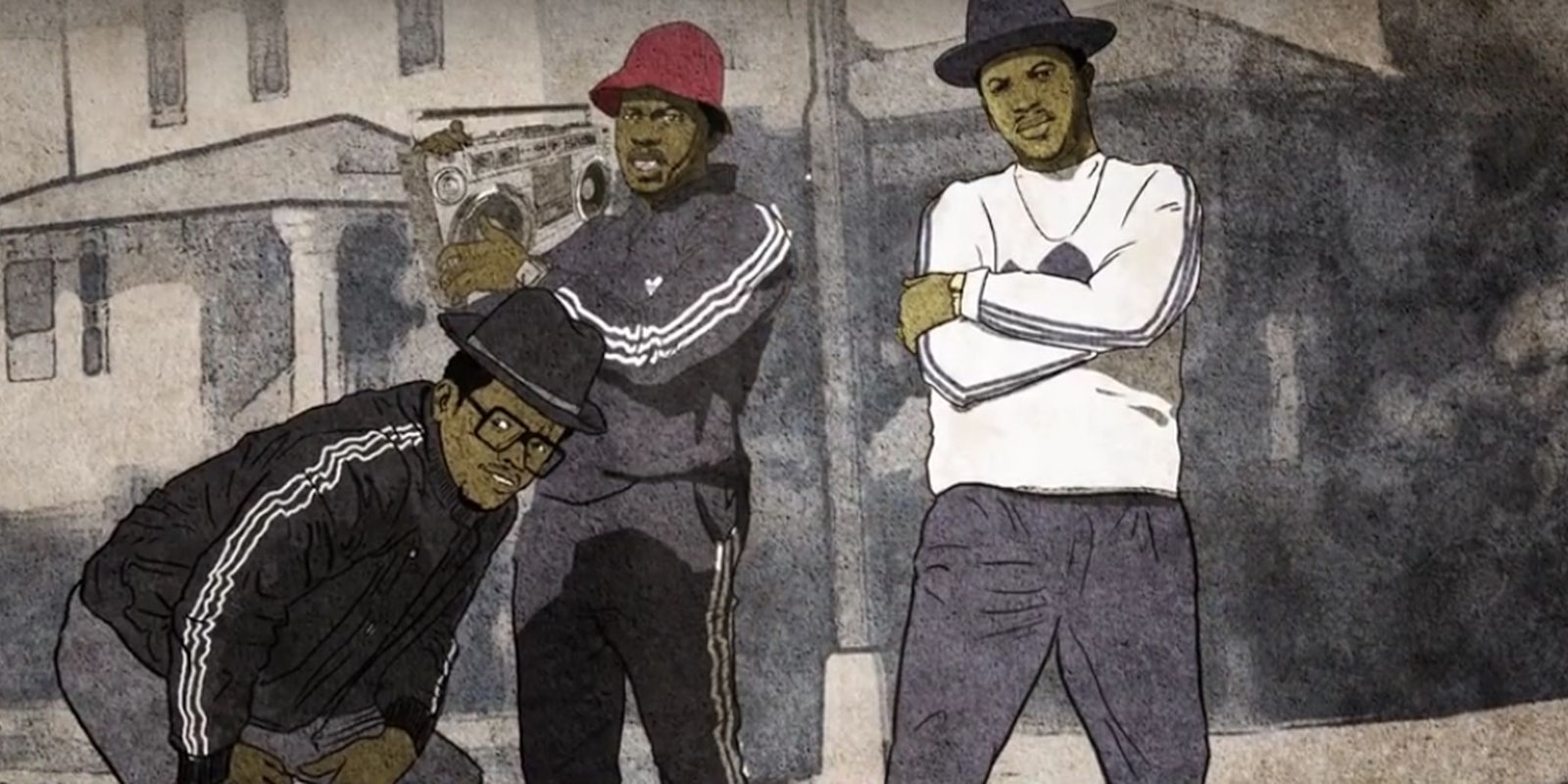Netflix’s Hip-Hop Origins is great music, but bad history. If you’re a rap fan, you’ll burn through this four-part documentary all the same.
Netflix has taken the lead in the rediscovery of hip-hop’s substantial origins, with its big-budget Baz Luhrmann musical The Get Down and the Stretch and Bobbito documentary. Cementing its commitment to hip-hop’s historical essence, the streaming giant this month debuted a dense four-part documentary, Hip Hop Evolution, that goes from rap’s New York City and disco origins, through the West Coast’s rise to power in the early ’90s.
https://twitter.com/oz_f/status/806030875884339200
Capably narrated by Canadian rapper/documentarian Shad Kabango, the host interviews legends (including Grandmaster Flash, Ice T, DJ Kool Herc, Russell Simmons), as well as lesser knowns and barely-heard-abouts, in a valiant attempt to service the genre’s authenticity and transfer hip-hop’s oral chronicling into more archaeological permanence.
But unacceptable is the series’ lack of women, who only appear as fans. Aside from Roxanne Shanté’s (famous for participation in the public Roxanne Wars with the Real Roxanne) input relating to Kane’s relaxed coolness, women are completely excluded from the conversation. With no explanation, the series inexplicably fails to spotlight any female rapper, not even crucial pioneers like Salt-N-Pepa, MC Lyte, or Queen Latifah.
The inclusion of controversial pioneer and former Universal Zulu Nation head Afrika Bambaataa, shown a local hero in the Bronx, also presents both an interesting and troubling case. Here you have an unquestionably legitimized legend who’s also been accused of pedophilia on numerous occasions. Knowledgeable viewers, as well as amateur and real historians are left with cumbrous questions: Do the accusations undercut his elephantine contribution, and should they?
This documentary chooses focus on DJ Hollywood, marking the early Harlem disco/R&B DJ as rap’s original rhythmic rhymesayer, although many others interviewed (and Hollywood himself) didn’t necessarily identify him as “hip hop.” For his part, Hollywood notes interesting, forgotten figures such as famed New York City radio DJ Frankie Crocker, the Last Poets, and “chitlin’ circuit” vaudeville legend Pigmeat Markham.
The series shows why hip-hop broke big after the New York City blackouts of 1977. Had they not happened, there’s no way to project hip-hop’s ascendance out of the city, much less to its current mainstream stranglehold. In the second episode, pioneering rapper/DJ Grandmaster Caz—who cops to stealing a mixer during the blackouts—notes the significant changes in sound via the looting of higher-end equipment.
Only just barely touched on in episode three’s retelling of rap’s unofficial (New York City-specific) Golden Age is rap’s heavyweight cold war between Big Daddy Kane and Rakim. Their low-key rivalry spelled the end for many, dragging the genre into a brave new world of word wizardry.
Chanting “yes, yes, y’all, to the beat y’all” and rhyming cat with bat, hat, and chat, was over. Double and triple rhyming, intelligently fusing precise flows and intention, became the new technical standard. Darryl “DMC” McDaniels, of Run DMC fame, even notes that once he heard Rakim on the radio, he assumed the worst for his career.
Kane and Rakim mark the roundest plot point of rap’s lyrical progression model, representing a quantum leap forward from the primitive stylings of Sugarhill Gang, Melle Mel, and Kurtis Blow. To date there are very few rappers rivaling the prose prowess of the influential duo.
The extraordinary series adds an essential sturdiness to rap mythology, but it’s not without great faults. The series skates over the cultural impact of Luther Campbell and the Miami bass sound, happening concurrently with events found in episode three (“The New Guard”) and episode four (“The Birth of Gangsta Rap“). The evolution also stops at Dr. Dre’s The Chronic, but fails to mention what should have been episode three’s natural endpoint, Nas’ Illmatic. There’s also little acknowledgement of the Beastie Boys, except as a group Rick Rubin was in before he met Russell Simmons.
As a documentary tasked with outlining rap’s vital origins, the project falls short.
